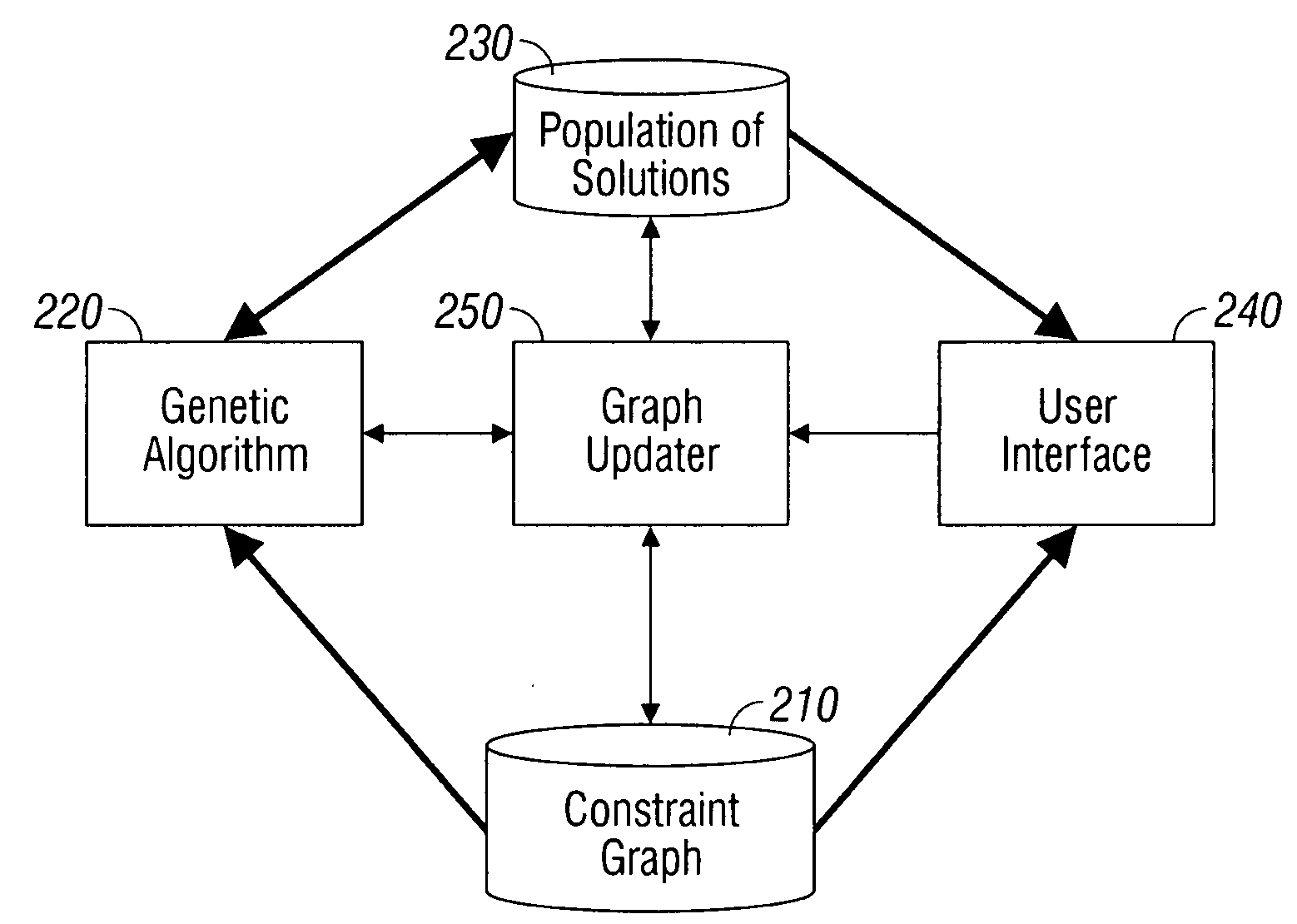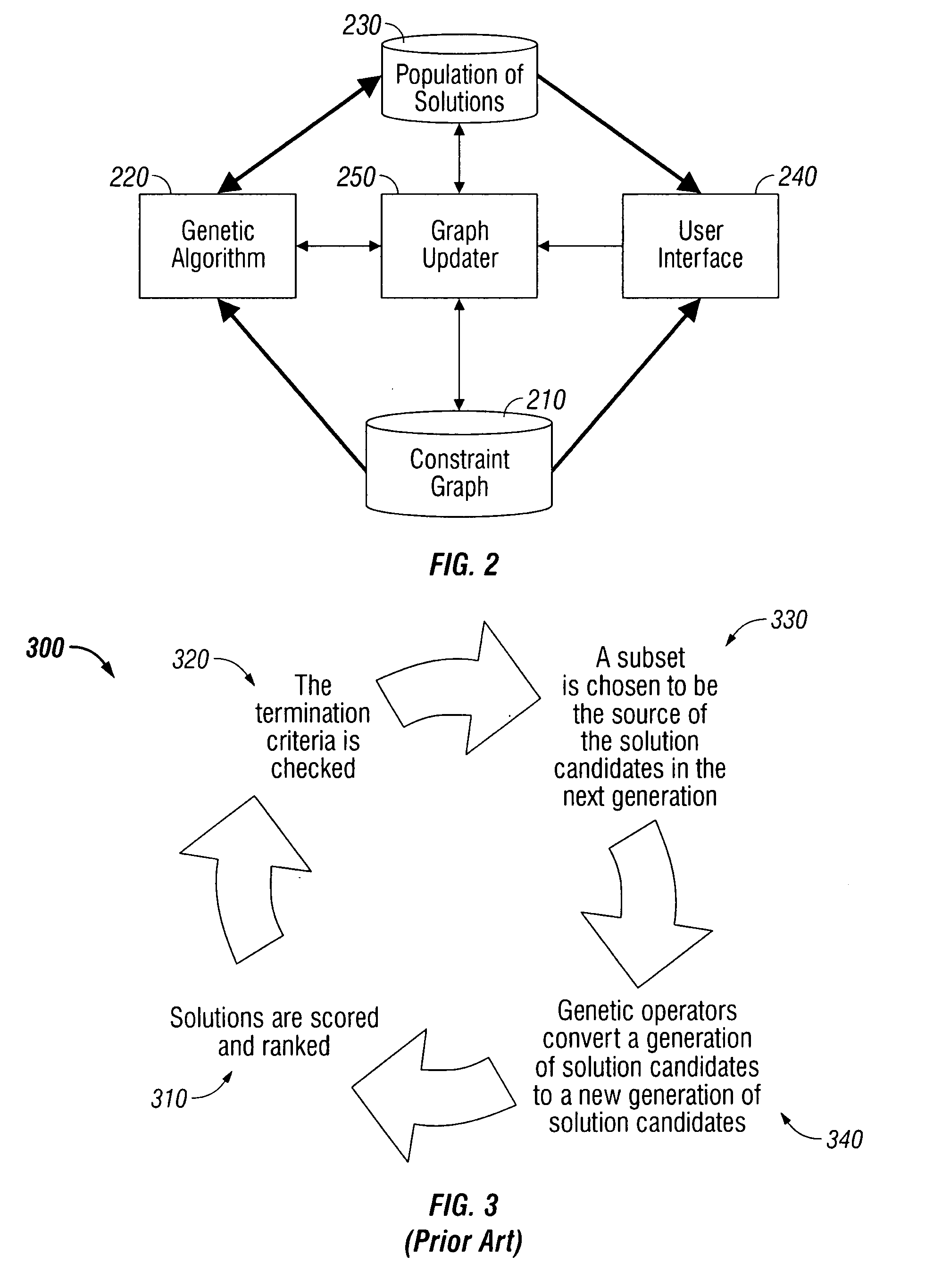Method and system for solving an optimization problem with dynamic constraints
a dynamic constraint and optimization problem technology, applied in the field of methods and systems for solving dynamic constraints, can solve problems such as failure of genetic operators, and failure of genetic operators to solve optimal solutions for current constraints
- Summary
- Abstract
- Description
- Claims
- Application Information
AI Technical Summary
Benefits of technology
Problems solved by technology
Method used
Image
Examples
Embodiment Construction
[0021]The genetic algorithm in an embodiment represents each potential solution to an optimization problem as a chromosome, and a constraint graph is used to help ensure that all chromosomes correspond to feasible solutions. The optimization problem in an embodiment is the scheduling of air missions as in, e.g., creation of an ATO, and each chromosome, in an embodiment, represents a set of air missions.
[0022]Identifying whether a particular solution is feasible or infeasible is a constraint satisfaction problem that can be described by a constraint network. A constraint network is a triple in which is a finite set of variables X={X0, X1, . . . , Xn} with respective domains D={D0, D1, . . . , Dn} containing the possible values for each variable. C={C0, C1, . . . , Cn} is the set of all constraints where each constraint Ci is a relation that imposes a limitation on the values that a variable, or a combination of variables, may be assigned to. A constraint network can be represented a...
PUM
 Login to View More
Login to View More Abstract
Description
Claims
Application Information
 Login to View More
Login to View More - R&D
- Intellectual Property
- Life Sciences
- Materials
- Tech Scout
- Unparalleled Data Quality
- Higher Quality Content
- 60% Fewer Hallucinations
Browse by: Latest US Patents, China's latest patents, Technical Efficacy Thesaurus, Application Domain, Technology Topic, Popular Technical Reports.
© 2025 PatSnap. All rights reserved.Legal|Privacy policy|Modern Slavery Act Transparency Statement|Sitemap|About US| Contact US: help@patsnap.com



